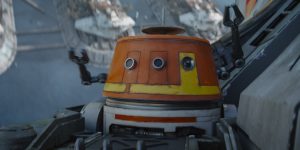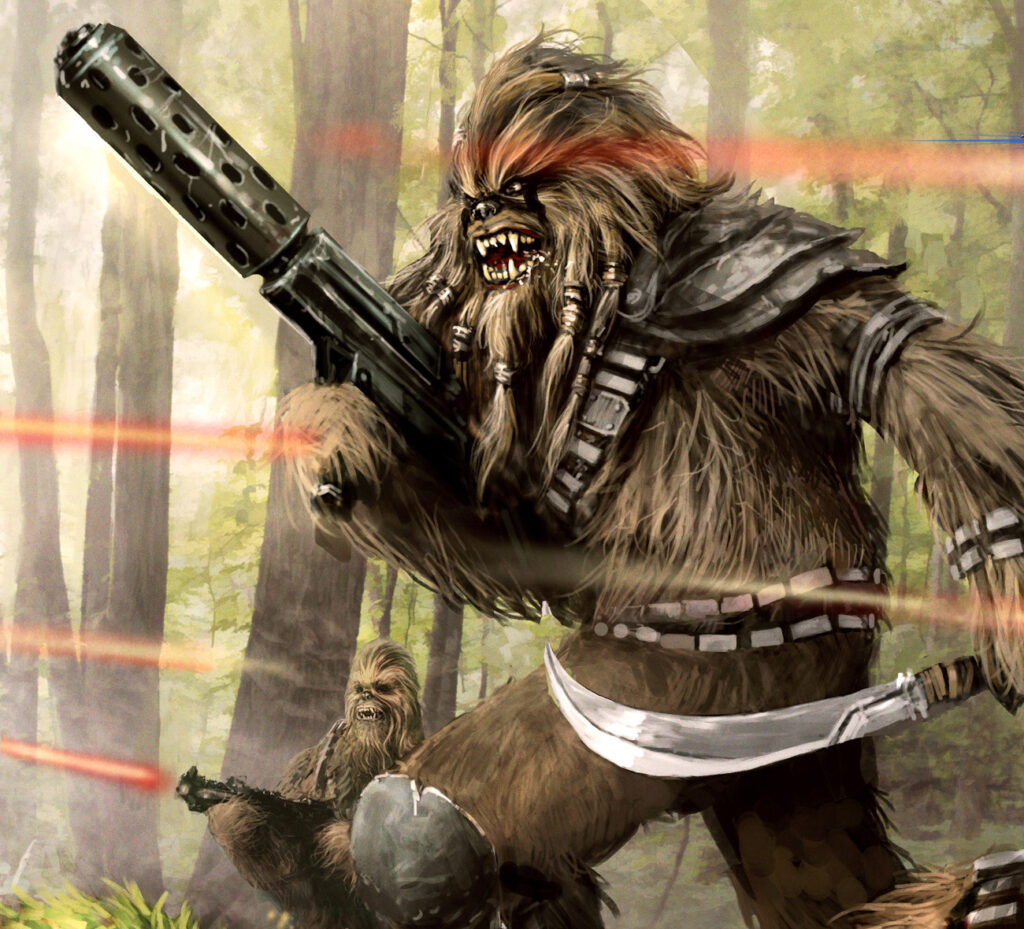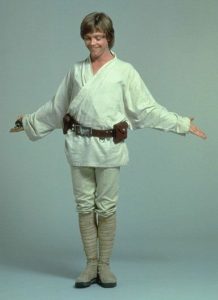
Trending Today

This is an archived post relevant to Star Wars Legion in its original iteration. We are keeping it on the site for historical purposes but it should not be used for reference to Legion 2.6 (the current iteration of Legion as of Fall 2024).
This week we are taking a break from the unit deep dives to look at an important, and relatively easy to calculate, defensive stat.
Defensive metrics are more difficult to quantify in a useful way than offensive ones. Generally speaking, each of your units is going to be attacking just once over the course of a turn (except for that whiny farmboy), and you have control over when that happens and what target you pick. The frequency and intensity of defensive events, however, is much more variable. It is ultimately up to your opponent to decide when and how he attacks your units. If you have a big, tough, hard to kill unit, but your opponent never attacks it, its defensive abilities never impact the game (except as a deterrent).
Defensive abilities are therefore not themselves inherently valuable; they must be paired with some other attribute (like offense or other utility abilities), to make that defense useful. Suppose, for example, you had a big, scary stationary vehicle with 30 wounds and a red defense die, but no attack or other abilities. Would your opponent ever attack this unit? Is it really that big and scary? Are those 30 wounds and that red die really worth anything at all?
This is important when evaluating two of the newly previewed units in particular: Wookiee Warriors and Imperial Royal Guard. Both of these units are tough, in very different ways. It is not enough just to be tough, but luckily both the Wookiees and the IRG have offensive abilities that force you opponent to deal with them or other abilities that allow them to transfer hits from other units onto themselves (guardian in the case of IRG).
Their defense is therefore important to quantify, since neither is as efficient on offense as other choices in the Rebel and Imperial toolkits. For example, from an offensive perspective, Wookiees would appear to be broadly similar to Fleet Troopers, but for more points and with less dice. Looking at defense allows us to attempt to understand why Wookiees and IRG cost more relative to other Rebel and Imperial choices. The fact that they are the first non-Jedi units that are properly dangerous in melee is only part of the equation.
With that, let’s get into Effective Wounds and Effective Wounds per Point.
Effective wounds is a fairly simple stat to calculate. There are two primary components to a unit’s durability: wounds and defense die. Effective wounds combines those two components into a useful catch-all stat.
To calculate effective wounds, you simply divide the total wounds of a given unit by the failure chance of their save. For example, a Stormtrooper squad has six wounds and a red defense die, which fails 1/2 (half) of the time. One simply divides that Stormtrooper squad’s six wounds by 1/2 to get their effective wounds, which is 12. Similarly, a Rebel Trooper squad has 6 wounds and a white/surge defense die, which fails 2/3 of the time. Their effective wounds are 9 (6 divided by 2/3). In practice this means, on average, a Stormtrooper squad can take 12 hits before being defeated, and a Rebel Trooper squad can take 9.
Below are the Effective Wounds for the various unit options for Imperials and Rebels. We will look at Rebels first and then Imperials. There are rows here for the various loadouts, as the cost of a unit is relevant to its Effective Wounds per Point. The table is sorted by Effective Wounds per Point. Blue/Green is good, Red is bad.
A few caveats; this table does not account for Armor or the Cover 1 abilities of the T-47 and Speeder Bikes. We’ll look at the benefits of both of these further down in the article.

Hey look, another efficiency chart the T-47 is at the bottom of. We’ll give it a pass for now as this doesn’t account for armor… though even if you were to double the T-47’s Effective Wounds per Point, it would still be less than a Z-6 squad. So there’s that.
Naked Rebel Troopers are tops on this list. There is going to be a theme here that is also common to the Imperial chart; naked, cheap troopers are a cost effective source of wounds. Of course, they also don’t hit very hard without a heavy weapon upgrade.
The next unit down on the list, Wookiees, does hit pretty hard. Not as hard as pure offensive choices like Fleets, but don’t let that t-shirt save deceive you. Wookiees are pretty tough; and they are effectively immune to pierce (and bad luck), since almost none of their durability depends on rolling blocks.
Go a little further down and you have another case for the Z-6. And this chart accounts for their poor save. Get those boys in cover and give them a dodge token and you are in business.
The bottom of the list has some expected results as well. A two man sniper team is very expensive and fragile, as are a larger unit of Commandos.
Don’t worry about Luke being near the bottom there; in addition to having a number of ways to gain a red/surge save with Deflect, you are obviously getting a lot more than just 6 wounds and a red die for your 160 points. Commanders are tough to value with just efficiency metrics.
Lets move on to the good guys.

Look at all those red defense die. Rebel Troopers are jealous.
Naked Storms are tops on this list as well, but of course their offensive output is pretty negligible without a heavy weapon upgrade.
The next unit on the list, Royal Guard, clock in at 0.16 effective wounds per point, which is pretty excellent. They will be a tough and disruptive melee unit. I could certainly see these guys shifting the meta once they hit the table, as they fill a needed hole for Imperials.
Scout Troopers, like their Commando counterparts, are quite fragile for their point cost.
All those red dice also mean something else important; vulnerability to Pierce. Units with good armor saves rely on those block results to increase their effective wounds. If you are shooting a unit of Royal Guard with a bowcaster or a scattergun, those 16 Effective Wounds start looking a lot less effective. Obviously Luke, Vader, and Palpatine are all Immune to Pierce so those red dice hold up better (and Boba’s Impervious helps there as well, though not quite as much).
Reliance on the defense die for one’s Effective Wounds also slightly increases a given unit’s susceptibility to streaks of poor luck. All you Imperial players know how sad panda you feel when you get hit three times and throw three blanks.
Alright, so that is the simplified version of Effective Wounds. Next we’ll move on to what I’ve dubbed Adjusted Effective Wounds, which attempts to account for the defensive utility of the Armor and Cover 1 keywords.
The benefits of Armor and Cover vary based on the attacker, so quantifying their impact (no pun intended) is somewhat of a subjective exercise, but it is worth attempting to do in a principled fashion. After looking at the results, they still don’t feel quite right to me. I am open to suggestions to tweak the methodology; please post in the comments if you have some.
I should note that the illustrious Nick Freeman of Impact X has done some work on this as well. I believe his methods are equally defensible (if not better). You can find it here: Armor & Impact
I’ll lead with the results, and if you are interested in the methodology, feel free to read further.
Here is the Rebel chart:

After applying a 41% Armor benefit to the AT-RTs and a 50% combination Armor/Cover benefit to the T-47, both look quite a bit better.
In practice I still feel like my AT-RTs are made of peanut brittle, which I why I’d like to explore the Armor benefit a little further in the future.
Empire chart:

There are only two units to adjust here; the AT-ST and the Speeder bikes. Both are looking more durable.
I think the primary takeaway from all this is that I feel a little better about the new melee units, especially Wookies. Imperial Royal Guard looked good on paper from the start, filling a needed Imperial hole for a reasonable cost and being awesome looking to boot. This analysis simply confirms the IRG are a solid source of durability as well as board presence. Wookies are in a much more awkward spot role-wise. Time and table-testing will tell, but Wookies are at least looking more durable than I thought, despite their t-shirt save.
Feel free to read on below if you want the nitty-gritty of how I arrived at Adjusted Effective Wounds.
Having previously run simulations to generate outputs of Net Hits and Net Impact hits, I compared the two to determine how much, on average, the Net Hits differed from the Net Impact hits. For the purposes of this average, I removed units and loadouts that are not commonly seen right now in tournaments; namely exhaust weapons (except the MPL-B) and the T-47. I also included a separate value for the DLT-19 fired by itself, as this is a common tactic.

After running the simulations, I found that, on average, the most commonly used units/loadouts generated 41% less Impact hits than non-Impact Hits.
Obviously this is somewhat impractical; if your opponent has a mix of Impact and non-Impact weapons, they are generally going to be using the former to shoot your vehicles and the latter to shoot your other stuff. In practice, this means the Armor will normally not be doing very much at all; for example, if an AT-RT shoots an AT-ST with a Laser Cannon, the AT-ST’s Armor keyword does nothing whatsoever; except force your opponent to shoot at it with the AT-RT instead of something else. The primary weakness of this methodology is that it weights each attacker equally, when in fact many of these units would never even target an armored unit.
This brings up another nebulous (and likely more practical) benefit of Armor; opportunity cost. If you have dangerous armored units, your opponent has to bring Impact weapons to deal with them, and then they have to shoot your armored units with those Impact weapons instead of their more plentiful and cheaper non-Impact weapons. Impact weapons cost more than non-Impact weapons. In fact, on average, a non-Impact hit costs 24.74 points, and an Impact hit costs 48.76 points, which is nearly double. This sort of benefit is much harder to quantify that a straight damage reduction, but it is worth knowing nonetheless.
Assessing the benefit of the T-47 and Speeder Bikes’ Cover 1 is relatively simple; as we’ve already previously looked at the different weapon/unit profiles with and without Cover 2, we just have to re-run the simulation and compare no cover to Cover 1.
As with the Armor keyword analysis, for the purposes of this exercise, the simulation only includes unit/weapon options as attackers that are actually taken in the current meta; so no exhaust weapons (except the MPL-Barrage) and no T-47.
I also gave the Speeder Bikes and the T-47 the benefit of being smaller units, and therefore worse targets for flamethrowers (even though they ignore the former’s Cover 1). Similarly, I gave the T-47 the benefit of its Immune: Blast keyword as well.
Here is what the net hits look like simulated against an unarmored unit with no cover compared with Cover 1:

This results in a 22% benefit to the Speeder Bikes for their Cover 1.
The T-47 was a little more complicated. In practice, the Cover 1 keyword often doesn’t do anything at all, as it simply removes a hit that would be cancelled due to armor anyway, except against high-Impact, low dice weapons like the AT-RT Laser Cannon or Saber Throw.
To combine the benefits of the Armor and Cover 1 keywords, I compared the net non-Impact hits against targets in the open vs. Impact hits against targets with Cover 1 (the T-47).

This results in a 50% benefit to the T-47 for its combination of keywords.


Copyright © 2024 The Fifth Trooper. All Rights Reserved.